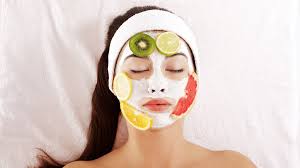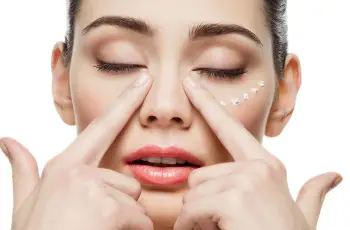
How Overnight Masks Will Give You Great Skin
In the ever-evolving world of skincare, it often feels like there’s always something new and exciting vying for a spot in your routine, and overnight masks are the latest addition creating a beauty buzz.
These nighttime wonders promise radiant, hydrated, and rejuvenated skin by morning—all while you sleep peacefully, without having to add any extra steps to your morning madness.
Imagine a product that works like a fairy godmother, magically transforming your tired, dull complexion into a luminous glow as you drift off under the covers.
But are overnight masks just another gimmick in a crowded beauty industry, or are they genuinely effective in helping you achieve your skincare goals effortlessly?
Let’s dive into the details, demystify overnight masks, and explain why they’ve become such an essential part of the modern beauty ritual.
What Exactly Is an Overnight Mask, and How Does It Work?
An overnight mask is a leave-on treatment designed to deeply hydrate and repair your skin while you sleep, allowing your skin to absorb all its goodness without interruption.
These masks typically come in the form of lightweight gels or creams, formulated with potent ingredients that penetrate your skin during its natural nightly regeneration cycle.
Unlike traditional face masks that dry, crack, or require removal after 15–20 minutes, overnight masks stay soft and breathable, making them safe and comfortable to sleep in.
They work by sealing in moisture and forming a protective barrier over your skin, preventing water loss and keeping harmful environmental pollutants at bay.
While you sleep, active ingredients such as hyaluronic acid, peptides, or niacinamide dive deep into your skin, addressing issues like dryness, dullness, and fine lines.
This is when your skin is in its most relaxed and receptive state, allowing the formula to deliver maximum benefits without disruption from external stressors.
Do You Really Need an Overnight Mask in Your Routine?
Though not an everyday necessity like cleansers or sunscreen, overnight masks are ideal when your skin needs extra care, especially during colder months or periods of high stress.
If your complexion is feeling tight, lackluster, or flaky, it’s a signal that your skin’s barrier is compromised—and that’s exactly where overnight masks can help most.
Think of them as skin saviors: they come in to revive, recharge, and restore when your usual routine just isn’t delivering the results you want.
Dry patches, fatigue-induced dullness, or signs of early aging can all be reduced with consistent, targeted use of a well-formulated overnight mask.
When used once or twice a week, overnight masks can provide long-lasting hydration and visible radiance, helping your skin bounce back from environmental stressors.
How to Use an Overnight Mask for Best Results
The best time to apply an overnight mask is about 30 minutes before bed, giving it time to absorb and set so you’re not rubbing it all over your pillow.
Start with freshly cleansed and toned skin, and if you use serums or other active treatments, apply those first before layering on your overnight mask.
Use a 10p-sized amount and gently spread it across your face, avoiding the delicate eye area unless the product specifically says it’s safe for that region.
Some masks may feel tacky or sticky at first, but this usually disappears after a few minutes as the formula settles into your skin’s upper layers.
There’s no need to apply a separate night cream afterward—overnight masks are designed to replace your final moisturizer and provide a more intensive effect.
What Makes Overnight Masks More Potent Than Night Creams?
Unlike traditional night creams, overnight masks contain higher concentrations of active ingredients designed to work intensively over a longer period.
They often include slow-release technology, which allows ingredients like retinol or ceramides to gradually penetrate the skin without causing irritation.
The occlusive layer formed by many masks locks in moisture and prevents transepidermal water loss, a key factor in dehydrated, dull-looking skin.
This barrier not only helps ingredients absorb better but also protects your skin from allergens, dust, and bacteria while you sleep.
As a result, the next morning your skin feels soft, supple, and plump—with improved texture and reduced visibility of fine lines or blemishes.
Can People with Oily or Acne-Prone Skin Use Overnight Masks?
Absolutely—but with caution and the right formula. Even oily skin can become dehydrated, especially if you’re using drying acne treatments or exfoliants.
Look for non-comedogenic, gel-based overnight masks formulated with ingredients like salicylic acid, tea tree oil, or niacinamide to balance oil production.
Avoid overly rich or creamy formulas that might clog pores or trigger breakouts, especially if your skin is sensitive to heavier moisturizers.
Using a lightweight overnight mask 1–2 times a week can actually help regulate oil, reduce inflammation, and speed up recovery from active blemishes.
Always do a patch test before trying a new mask, especially if your skin is prone to congestion or reactions to active ingredients.
Are Overnight Masks Suitable for Dry or Sensitive Skin Types?
For dry or sensitive skin, overnight masks can be game-changing, providing intense hydration and barrier repair while minimizing irritation or redness.
Choose masks with soothing ingredients like aloe vera, centella asiatica, oat extract, or squalane that nourish and calm the skin overnight.
These types of masks can help strengthen the skin’s protective barrier, preventing further moisture loss and reducing sensitivity over time.
Even flaky, irritated, or wind-chapped skin can feel smoother and more resilient with consistent use of a hydrating overnight treatment.
Use them two to three times a week—or even more often during colder months—to keep your skin soft, balanced, and protected.
Do Overnight Masks Really Work While You Sleep?
Yes, and science backs it up. Your skin follows a natural circadian rhythm, and nighttime is when it goes into repair mode—especially between 10 p.m. and 2 a.m.
During sleep, blood flow increases, cell turnover speeds up, and the skin barrier becomes more permeable, allowing products to work more effectively.
Overnight masks take full advantage of this cycle, supplying active ingredients right when your skin is most receptive to healing and renewal.
If you’re using products with AHAs, BHAs, peptides, or ceramides, overnight masks help extend their benefits while offering a protective cushion.
Over time, this can lead to smoother texture, more even tone, fewer breakouts, and a more youthful, glowing complexion each morning.
How Often Should You Use an Overnight Mask?
Twice a week is the sweet spot for most skin types, allowing your skin to rest between applications while still enjoying consistent benefits.
Using overnight masks every day could overwhelm your skin, especially if they contain strong actives like acids or exfoliants that may cause irritation.
Pay attention to how your skin responds—if it feels overly greasy, sensitive, or starts to break out, you may be overdoing it.
For sensitive or acne-prone skin, once a week may be plenty, while dry or mature skin might benefit from more frequent use in moderation.
Like any skincare product, less is often more—consistency and quality matter more than quantity when it comes to healthy skin results.
Should You Apply Moisturizer Before a Sleeping Mask?
You can, but it depends on the mask. Some formulas are designed to be the final step in your routine, while others can be layered over moisturizer.
If your skin is very dry, applying a moisturizer first can help seal in hydration and create a soft, nourished base before using the mask.
This layering technique is especially helpful during winter or when your skin feels stripped from exfoliants, retinoids, or harsh environments.
However, if your overnight mask is rich and emollient, it may be enough on its own and act as both moisturizer and treatment in one.
Are Overnight Masks and Sleeping Masks the Same Thing?
Yes—these terms are used interchangeably by different brands, but they both refer to the same category of leave-on nighttime treatments.
Whether a label says “sleeping mask” or “overnight mask,” the goal is the same: to deliver intensive care and hydration while your skin sleeps.
Do You Wash Off an Overnight or Sleeping Mask in the Morning?
Yes, gently rinse your face in the morning with lukewarm water to remove any residue, followed by your usual morning skincare routine.
You’ll likely notice your skin feels softer, smoother, and more supple immediately after rinsing, which is a sign that the product has worked well.
How Will You Know If an Overnight Mask Is Working?
If your skin feels hydrated, plump, smooth, and calm in the morning with improved texture and no signs of irritation, your mask is doing its job.
You might also see fewer fine lines, reduced redness, or a healthy glow that makes you look like you got a full night of beauty sleep—even if you didn’t.
The Bottom Line on Overnight Masks
Overnight masks aren’t just another skincare trend—they’re an easy, effective way to pamper your skin and maximize its nighttime recovery cycle.
By choosing the right formula for your skin type and using it consistently, you’ll wake up to fresher, healthier, more radiant-looking skin each day.
In a fast-paced world where sleep and self-care are often compromised, overnight masks help bridge the gap—giving your skin the rest it deserves.
From hydrating hyaluronic acid to soothing oat extract, these formulas are packed with science-backed ingredients your skin craves while you snooze.
So next time your skin is looking a little dull or tired, reach for your favorite overnight mask—and let beauty sleep do the rest.


